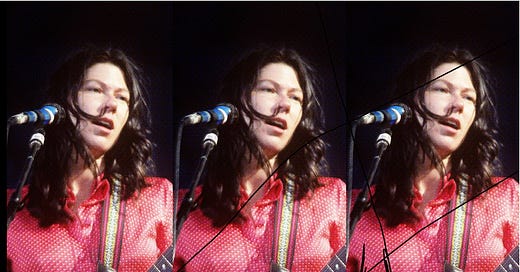1. The Indie Sleaze Revival Was a Mistake
As one of the last youth cultures to arise before the advent of social media—though not blogs, where those Cobrasnake party photos that gave the scene its sleazy veneer first appeared—the hipster era was well primed for the 20-year nostalgia cycle. Add in the fact that a whole cohort of kids hit adulthood during the pandemic, and you can almost understand what got so many of them excited to hit up The Dare’s DJ sets at Home Sweet Home.
-Chris Black
It is pretty surreal to live through your first 20-year nostalgia cycle and actually see shit you grew up with (albeit as a very young child) come back. The Indie Sleeze revival has garnered many think-pieces, as has its more gen-z counterpart, Y2K style. The “guilty pleasure” of nostalgia as Chris Black describes it is “derided as the final resort of aging people who lack the vision or energy to keep up with the new shit.” Black argues that the Indie Sleeze revival fails as an attempt by most, who simply re-live or LARP the glory days (cheap rent and good vibes) rather than skilfully use it as a springboard to infuse the styles or art from that era into modern forms.
Nostalgia shouldn’t be used as a mood board to fully copy, rather it should be a way to guide you in your attempt to bring forth something else entirely. Newness and innovation in itself isn’t necessarily good or desirable, in my opinion, it’s newness with consideration and appreciation for the past that garners the most adoration. Read here.
2. THE CELEBRITIES HAVE RETURNED TO CHATEAU MARMONT
Oh, it’s definitely back,” Bret Easton Ellis told me when I asked him about the Chateau Marmont. The novelist first started going to the Los Angeles hotel in the early eighties, when “it was really run-down.” (“I remember partying in one of the rooms and ordering liquor and pizza to be delivered.”) He lived there for a stretch in the mid-aughts, after coming back from a few years in New York while looking to buy an L.A. house. He even kept going during the pandemic, when the establishment was fairly abandoned. (“It was so eerie and magical.”) But now, he said, the Chateau was no longer a ghost town. In fact, it was “hopping.”
“It’s back, baby,” said the podcaster Chris Black, who, though he has a home in Los Angeles, occasionally stays at the Chateau for the weekend. “I was there on Thursday night a couple of months ago and it was, like, Pacino, DiCaprio. It’s the best place on earth.”
3. THE A-Z GUIDE TO STONE ISLAND
The bridge between sport, military tailoring, and fashion runs through a small town near Bologna. It was mapped out by a Pirelli tire salesman who invented garment dyeing and stood as a member of the Communist party; it has a black badge on its sleeve. Stone Island defies definition while inviting it: the 42-year-old house, founded by Massimo Osti, is framed as half history lesson and half an expanding set of experiments with dyes and fabrics.
SSENSE gives a comprehensive lesson on Stone Island, ranging from history to innovative fabric uses, to manufacturing techniques to well… directing you to the part of the site where you can buy some Stone Island. Read here.
4. The Dumbphone Boom Is Real
The growing dumbphone fervor may be motivated, in part, by the discourse around child safety online. Parents are increasingly confronted with evidence that sites like Instagram and TikTok intentionally try to hook their children. Using those sites can increase teens’ anxiety and lower their self-esteem, according to some studies, and smartphones make it so that kids are logged on constantly. Why should this situation be any healthier for adults? After almost two decades with iPhones, the public seems to be experiencing a collective ennui with digital life. So many hours of each day are lived through our portable, glowing screens, but the Internet isn’t even fun anymore. We lack the self-control to wean ourselves off, so we crave devices that actively prevent us from getting sucked into them. That means opting out of the prevailing technology and into what Cal Newport, a contributing writer for The New Yorker, has called a more considered “digital minimalism.”










